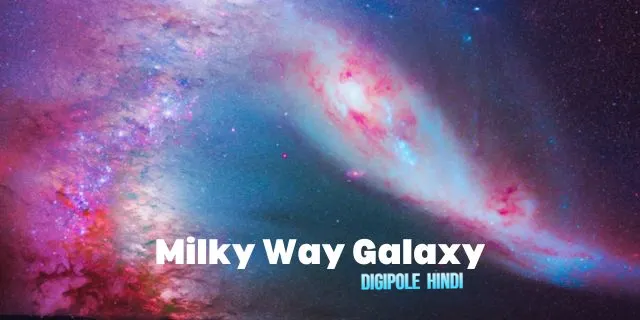Our galaxy is surrounded by innumerable mysteries. Space scientists have been busy uncovering these mysteries for centuries.One of the big discoveries among them is the system where a group of planets including our Earth is maintaining a coherent universe through the force of gravity.
This is a group of planets which has been playing an important role in maintaining our Earth and the life on it. Through this article, we will try to understand about this in space and gather information about what is the planet in the solar system. So stay with this article so that you can get all the important information about its structure.
Table of Contents
What is planet?
So let’s know first and clarify what planet is. In fact, it is an astronomical object that revolves around a large star with its own certain speed limit and due to the pull of its gravitational field, has acquired a specific and sufficient space with an almost spherical shape.
In some issues, there are differing opinions among some astronomers regarding the definition of it. Some astronomers present a different argument on it in some cases, while another group of astronomers adheres to the International Astronomical Union (IAU) definition.
let’s know what IAU said in this regard:
It must revolve around a star, such as our Sun. Gravity causes to assume a nearly round shape, known as hydrostatic equilibrium. This happens when the force of gravity pulls material towards its center, resulting in a spherical or oblate shape. They are empowered enough to remove debrises from their orbital path, which means it has enough gravitational influence to dislodge or expel other objects around them.
Structure of the heliocentric system?
According to their characteristics, they can be categorized into two main types: 1. terrestrial and 2. gas giants.
What are Terrestrial: The innermost of our star system, Mercury, Venus, Earth, and Mars, are known as terrestrial. They are primarily composed of rocky material and have solid surfaces. They are relatively small in size compared to the gas giants. The are closer to the Sun and have higher temperatures. They have thinner atmospheres as compared to the gas giants. Earth and Venus have experienced significant geological activity over their histories, while Mars shows evidence of past geological activity as well.
What are Gas Giants: Beyond the terrestrial, we have the gas giants in the outer regions of it. Jupiter and the Saturn are considered gas giants, while Uranus and Neptune are referred to as ice giants. These are composed mainly of hydrogen and helium, with smaller amounts of other elements.
The gas giants are much larger in size compared to the terrestrial and have strong gravitational forces. They are primarily made up of gas and do not have a well-defined solid core like the terrestrial one. It should be noted that the overall structure of the system also includes the Sun, a belt of mostly rocky asteroids between Mars and Jupiter known as the asteroid belt, and the Kuiper belt of mostly icy objects beyond the gas giants.
How they are Organized ?
In the heliocentric system they are organized based on their distance from the Sun. Please note that all they are revolve around the Sun and the distance at which they are from the Sun while rotating is considered to be the basis of the distance.
The order of the planets is described below :-
Mercury:- It is closest to the Sun, and the smallest one among all of them.
Venus:- ThIs is the second one from the Sun, Venus is also often referred to as Earth’s sister due to its similar size and composition.
Earth:- Our home where we live, Earth is situated on the third position from the Sun and are known to support life.
Mars:- The fourth one from the Sun, and is often called the “Red Planet” due to its reddish appearance.
Jupiter:- It is the biggest planet in our solar system. Jupiter is a dense gas body and is located fifth from the Sun. It is almost twice as large as all the other planets in the star system.
Saturn:- The sixth one from the Sun, Saturn is another gas giant known for its prominent ring system.
Uranus:- The seventh one from the Sun, Uranus is an ice giant and is unique among all of them as it rotates on its side.
Neptune:- The eighth and farthest one, Neptune is also an ice giant and is known for its vivid blue color.
Apart from this, there is another planet which is known as Pluto. It was once considered the ninth planet in our heliocentric system, but now it is counted among the dwarf one. Beyond Neptune there is a region where many small icy objects are present, which is called the Kuiper Belt.
Read Also
FAQs
Q). Which is the coldest planet?
A). Neptune is considered one of the coldest planets in our solar system. While Uranus is cooler than Neptune, it is not viewed as a planet in the traditional sense but rather simply an ice giant.
Neptune holds the record for the coldest temperature ever measured, with temperatures usually around -214 degrees Celsius. However, Uranus has the lowest recorded planetary temperature reaching a very chilly -224 degrees Celsius.
Q). Which is the hottest planet in the solar system?
A). Venus is considered to be the hottest planet in our system. With a surface temperature of approximately 465 °C (869 °F), it is extremely hot due to its dense atmosphere. Despite being located at a greater distance from the Sun than Mercury, it is hotter due to its denser atmosphere and higher carbon dioxide content.
Q). The nearest planet to the sun?
A). ‘Mercury’ is known to be the closest to the Sun. In the mean of distance, it consider as the first among all the others and is located at an average distance of about 58 million kilometers (36 million miles) or 0.4 astronomical units from the Sun.
Q). How many planets are there?
A). There are a total of eight planets in the solar system: 1. Mercury, 2. Venus, 3. Earth, 4. Mars, 5. Jupiter, 6. Saturn, 7. Uranus, and 8.Neptune. Pluto, which was once considered the ninth, is now classified as a dwarf. Additionally, there are other dwarf planets in the solar system, such as Ceres, Haumea, Makemake, and Eris.
Q). Are there any other heliocentric systems in the galaxy?
A). It was difficult to answer this question 25 to 30 years ago. But during this time period astronomers have proposed several theories that indicate that the Milky Way has many stars orbiting its Sun, numbering 5,000 or more.
Q). Do you think solar systems move?
A). Definitely, they move. Our star system, consisting of the Sun and all the planets, is in motion within the galaxy. They are located in the Orion arm of the galaxy, about 26,000 light years from the center. It moving at an average speed of 720,000 kilometers per hour OR (450,000 miles per hour). It takes about 230 million years to complete one revolution of the galaxy. The Sun, along with the rest, revolves around the center of the galaxy It is located near the Orion arm, between the two major arms called Perseus and Sagittarius.
About The Author

Biswajit
Hi! Friends I am BISWAJIT, Founder & Author of 'DIGIPOLE HINDI'. This site is carried a lot of valuable Digital Marketing related Information such as Affiliate Marketing, Blogging, Make Money Online, Seo, Technology, Blogging Tools, etc. in the form of articles. I hope you will be able to get enough valuable information from this site and will enjoy it. Thank You.


